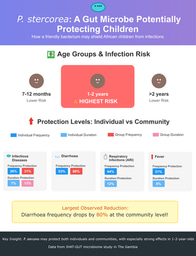Inversions in Atlantic herring - deepened understanding of their evolution and maintenance
Published in Ecology & Evolution and Genetics & Genomics

This project started when previous research in our group, the Andersson group at Uppsala University, described four large haplotype blocks on four chromosomes in the Atlantic herring. These blocks showed strong genetic differentiation between herring populations from North and South parts of the North Atlantic Ocean, coinciding with a gradient in water temperature from warm to cold. These haplotypes most likely play a major role in local adaptation to variation in seawater temperature. The pattern of genetic differentiation across a long stretch of the chromosome suggested suppression of recombination compatible with the existence of inversions, a type of structural variation where a chromosomal segment has flipped orientation. Such rearrangement could be lethal if a breakpoint disrupts gene function, and it suppresses recombination in the heterozygous state, facilitating the maintenance of different combination of alleles (haplotypes) in tight linkage disequilibrium. Alleles of different genes inside the inversion are inherited as a single Mendelian segregation. Inversions vary in size from a few kb to even 100 Mb and may thus overlap many genes, hence are sometimes called supergenes. They are often linked to complex phenotypes, such as local adaptation, reproductive strategies, life history traits, sex chromosome evolution, mimicry, and social behavior. Suppression of recombination can also result in the accumulation of deleterious recessive mutations due to less effective purifying selection in the inversion.
Inversions were first detected in 1921 by Alfred Sturtevant in Drosophila but remained unstudied for many decades after that because we lacked tools to detect them in most organisms. With the advent of whole genome sequencing, detection of inversions became possible, but it was still challenging to understand the factors governing the origin and evolution of inversions. This is because breakpoint regions are often full of repeats and structural variation. When we sequence these regions with short reads, we obtain many small sequence fragments that can all look the same due to these repeats, and so it is difficult to assemble and sequence them with short-reads. This all changed when long-read sequencing was developed, which allows sequencing across highly complex inversion breakpoints. Hence, it has not been possible to study the formation and maintenance of inversions until recently.
Our study generated long-read PacBio HiFi sequencing data from 12 Atlantic herring individuals from the Atlantic Ocean and the Baltic Sea and an outgroup species, the European sprat, to characterize the four large chromosomal inversions (size ranged from 1.3 – 7.8 Mb) in great detail. In addition, we used previously published short-read data for Atlantic herring populations and the sister species, Pacific herring, to study the evolution of the inversions. With this dataset we were able to resolve the inversions’ breakpoints at base-pair level and study the mechanism of formation of inversions. Three of the four inversions are flanked by direct repeats suggesting that inversions were formed by non-allelic homologous recombination between those repeats. We built genome to genome alignments to further understand the structural variations surrounding inversions and found a complex breakpoint structure with multiple repeats and palindromes in all four inversions.
In regards to their evolution, all the inversions were found to be >1 million years old and have originated after the split between Atlantic and Pacific herring, approximately 3.30 millions years ago. Compatible with their ancient origin and repressed recombination, we found strong genetic differentiation and strong linkage disequilibrium inside the inversions when compared to the rest of the genome. Theory suggests that suppression of recombination leads to the accumulation of deleterious mutations (genetic load), due to ineffective purifying selection and reduced Ne in the inversion region. However, our analyses on dN/dS, site frequency spectrum, and transposable elements showed very similar levels of mutation load between inversions and the rest of the genome, suggesting that purifying selection is effective in purging deleterious mutations in herring inversions. As we found support for extensive gene flux between haplotypes for all four inversions, this suggests that recombination between haplotypes is sufficient to allow purging of deleterious alleles. Together, the results supports the hypothesis that the inversion polymorphisms in Atlantic herring are maintained by divergent selection associated with adaptation to a gradient of seawater temperature.
Overall, this study advanced our knowledge on the origin and evolution of large inversions associated with local adaptation in Atlantic herring. Detailed investigation of breakpoint regions shed light on its complexity and the mechanism of origin of inversions. Analysis of age and population history revealed how evolutionary forces contribute to the maintenance of inversions. It additionally demonstrated that the theoretical assumptions pertaining to the accumulation of a mutational load inside inversions does not apply for all types of inversion polymorphisms.
Follow the Topic
-
Nature Communications

An open access, multidisciplinary journal dedicated to publishing high-quality research in all areas of the biological, health, physical, chemical and Earth sciences.
Related Collections
With Collections, you can get published faster and increase your visibility.
Clinical trials 2025
Publishing Model: Open Access
Deadline: Dec 31, 2025
Women's Health
Publishing Model: Hybrid
Deadline: Ongoing


Please sign in or register for FREE
If you are a registered user on Research Communities by Springer Nature, please sign in